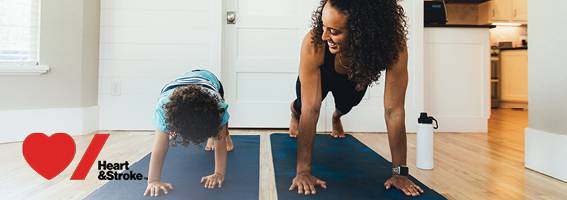Are you looking for an easy entrance into the world of physical activity? Or maybe you’re looking to up your activity levels with a low-impact exercise that you can do anywhere. Then you’re in luck because walking can be the perfect way for you to get physically active and improve your overall health.
Mari Leach, biokineticist at Discovery Vitality says: “Walking is an amazing way to get physically active, and increasing your physical activity levels contributes to reducing your risk of chronic health conditions. Cardiovascular disease, diabetes, hypertension, depression, cancer, and obesity are all conditions that physical activity like walking can help to minimize.”
According to the World Health Organization, a minimum of 150 minutes of moderate intensity exercise and 75 minutes of vigorous intensity exercise per week as well as 2 to 3 strength training sessions per week are vital for good health, as well as limiting sedentary time.
If you’re looking to start getting physically active to improve your health, walking can be the way to start your journey, and it is a great choice to promote a healthy heart. Studies have found that walking has a favourable impact on a variety of cardiovascular disease risk factors – including high cholesterol, high blood pressure, diabetes mellitus and smoking status.
Leach adds: “Remember, your heart is a muscle and physical activity helps make it stronger. Exercise can reduce stress, give you more energy, help you sleep better, and bring down your risk of heart disease.”
Walk before you run
One of the great things about walking is that it is free and you don't need any special equipment besides a pair of well-fitting shoes. When you are just starting, it is important to ease into your exercise routine, walk before you run, so to speak. Start slowly and periodically increase your physical activity and intensity to meet the Canadian Guidelines.
A great way to check if you're walking at the correct intensity is the talk test. If you can talk (slightly out of breath) while working out, but you can't sing or whistle, you're exercising at the right level.
6 steps to get started
Leach suggests the following to help you take the first steps:
- Find a safe place to walk. Start by walking up and down the streets of your neighbourhood or go to a local park. Rope in a walking buddy so you have someone to remind you to walk and keep you company.
- Warm-up. Even if you start with a gentle stroll, warming up is a good exercise habit that helps prevent muscle injury. Start slowly and add some light dynamic stretching (stretch while moving slowly).
- Listen to your body. Only do as much as you can, and don’t push yourself past your limit to the point of injury. It’s great to want to make a big impact on your health, but slow and steady wins the race, after all.
- Cool down. The last phase of any exercise session is always letting your body recover for a few minutes and having your heart gradually return to its resting rate. A cool-down includes slowly decreasing the intensity of your physical activity and stretching.
- Adjust your effort slowly. Allow your connective tissue to adapt to the impact of walking and running by slowly increasing you time or distance. Increasing your weekly distance by 10% at a time will help prevent you from doing too much too soon, ending up with an injury.
Warning signs to watch out for
Stop right away and see your doctor if you have any of the following symptoms while exercising:
- Chest pain, ache in jaw or neck, discomfort down the arms, pain across the shoulder or back
- Unusual shortness of breath
- Sudden cold or light-headedness (dizziness)
- A noticeably rapid, strong, or irregular heartbeat.
When to ask your doctor before you start exercising
Walking is a safe exercise for most people. But if you have a medical condition or haven't exercised for a while, you shouldn't rush into an intense exercise routine to get fit. Speak to your doctor before starting if you:
- Recently had surgery
- Have bad balance or fall often
- Feel dizzy when you walk or take medicine that makes you sleepy or dizzy
- Have a chronic illness
Go where your feet take you
It’s time to lace up your running shoes, put on some comfortable clothes, and get walking. Go where your feet take you, and start your walk to a healthier heart today!
Individual circumstances may vary. Please always check with a medical professional to ensure these strategies are right for you.
Other resources you may be interested in:


